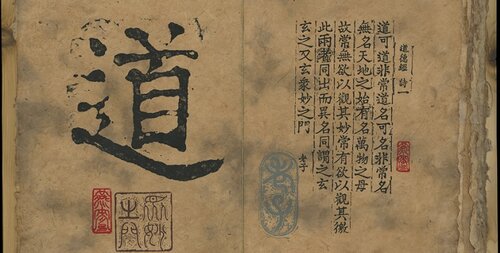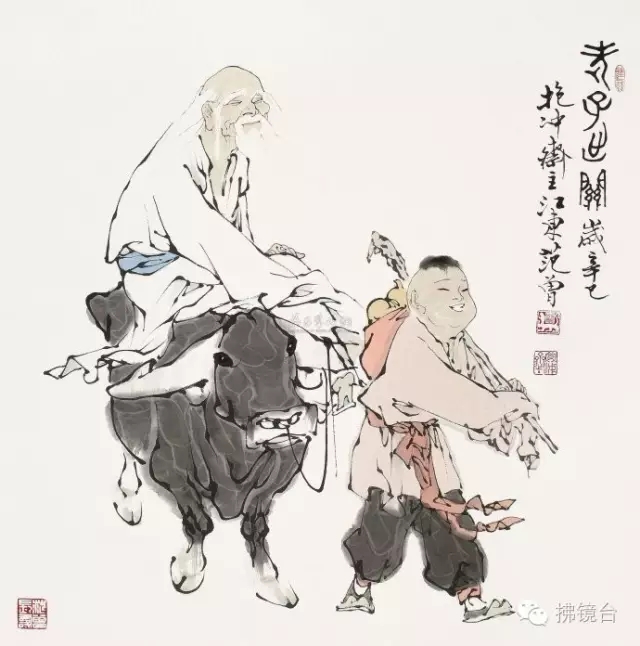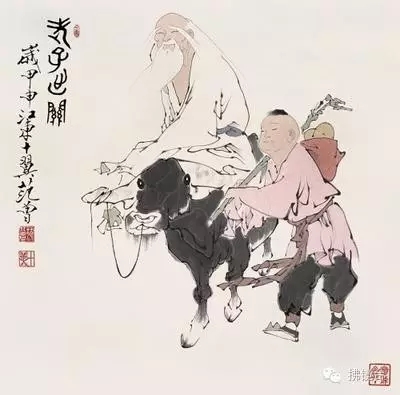
| 1 | 道德經: | 名可名,非常名。 無名天地之始;有名萬物之母。 故常無欲,以觀其妙;常有欲,以觀其徼。 此兩者,同出而異名,同謂之玄。 玄之又玄,衆妙之門。  |
Chapter 1
The Tao that can be spoken is not the eternal Tao
The name that can be named is not the eternal name
The nameless is the origin of Heaven and Earth
The named is the mother of myriad things
Thus, constantly with
out desire, one observes its essence
Constantly with desire, one observes its manifestations
These two emerge together but differ in name
The unity is said to be the mystery
The mystery of mysteries, the door to all wonders

Dao De Jing Chapter 1 - John WorldPeaceFeb 2 at 6:55 AM

THE CONTEMPORARY TAO OF PEACE AND HARMONYAS INTERPRETED by John WorldPeaceCopyright 1998 by John WorldPeace Houston, Texas USA
THE ANCIENT AND CONTEMPORARY MESSAGE OF THE TAO
Infinity (The Way) is the essence of all thingstangible andintangible.It has no beginning or end.It is the potential of all things; manifests allthings;disintegrates all things; is at one withall things.Change is Its constant.Oneness is the essence of peace and harmony.Distinctions divide the oneness of Infinity intoextremes.They are the source of confusion.Confusion is the source of judgment.Judgment the source of conflict and war.Therefore, flow in peace and harmony by rememberingthe oneness of all things.
PREFACE_________________________
The Tao te Ching was allegedly written by Lao Tzu about 2,500 years ago. It is not known if he simply wrote down oral traditions or whether he had some unique insights. It is not even known if the Tao was written by Lao Tzu or compiled by several others after his death.We also do not know how many manipulations the text has endured over the last 2,500 years. We cannot even be sure that the traditional Tao is the original Tao.What we do know is that this body of ideas has survived for 2,500 years. Therefore, we must acknowledge that these ideas have validity when applied to humanity.The Tao has been translated by many competent scholars into English. However, thewords used in the various translations are rather diverse.A translation compares one language to another. Translating Chinese into English is tricky because one is translating abstract pictographs into a linear language. Words can never fully translate a pictograph. This probably accounts for the wide variation in words used in the various translations. I am not a scholar. I did not translate even one pictograph. What I did was to look for the consensus among the various translations.Therefore, the result is more an interpretation than a translation.In addition, I tried to relate all the ideas to an underlying theme of peace and harmony. "How does a particular passage relate to the manifestation of peace and harmony?", is the question I asked about every idea. I tried to relate every word to a peace and harmony theme because I believe that this was the original intent of the Tao.Further, I tried, where appropriate, to replace some of the abstract concepts withsomething more concrete. I believe this allow more of a consensus of what is being communicatedand makes it easier to determine whether or not what is being communicated fosters peace and harmony.
In essence, I have simply done what many others have done over the last 2,500 years. Ihave tried to relate the Tao in contemporary language with the hope that the level of peace and harmony in the world will increase.My objective has been peace and harmony and not a literal translation. The following is simply my personal perspective of peace and harmony as seen through the Tao te Ching.

~*~*~*~*~
1.1
The infinity that can be conceived is not the everlasting Infinity. The infinity that can be described is not the perpetual Infinity.
1.2
The inconceivable indescribable is the essence of the all-encompassing
Infinite. Conceiving and describing applies only to the manifestations of Infinity.
1.3 Free from distinctions experience the oneness of Infinity. Focus on distinctions and see only the manifestations of Infinity.
1.4 Yet distinction and non-distinction are one within Infinity.
1.5 Potential within potential is the essence of Infinity.


No comments:
Post a Comment